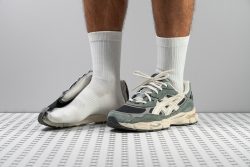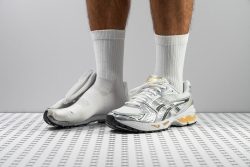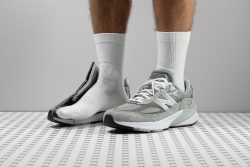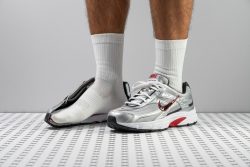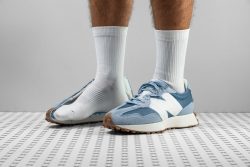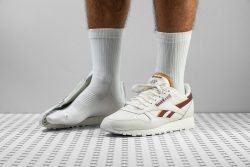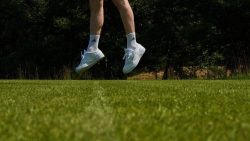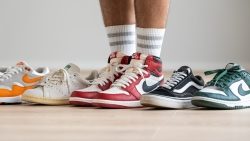7 Best Trainers For Plantar Fasciitis in 2025
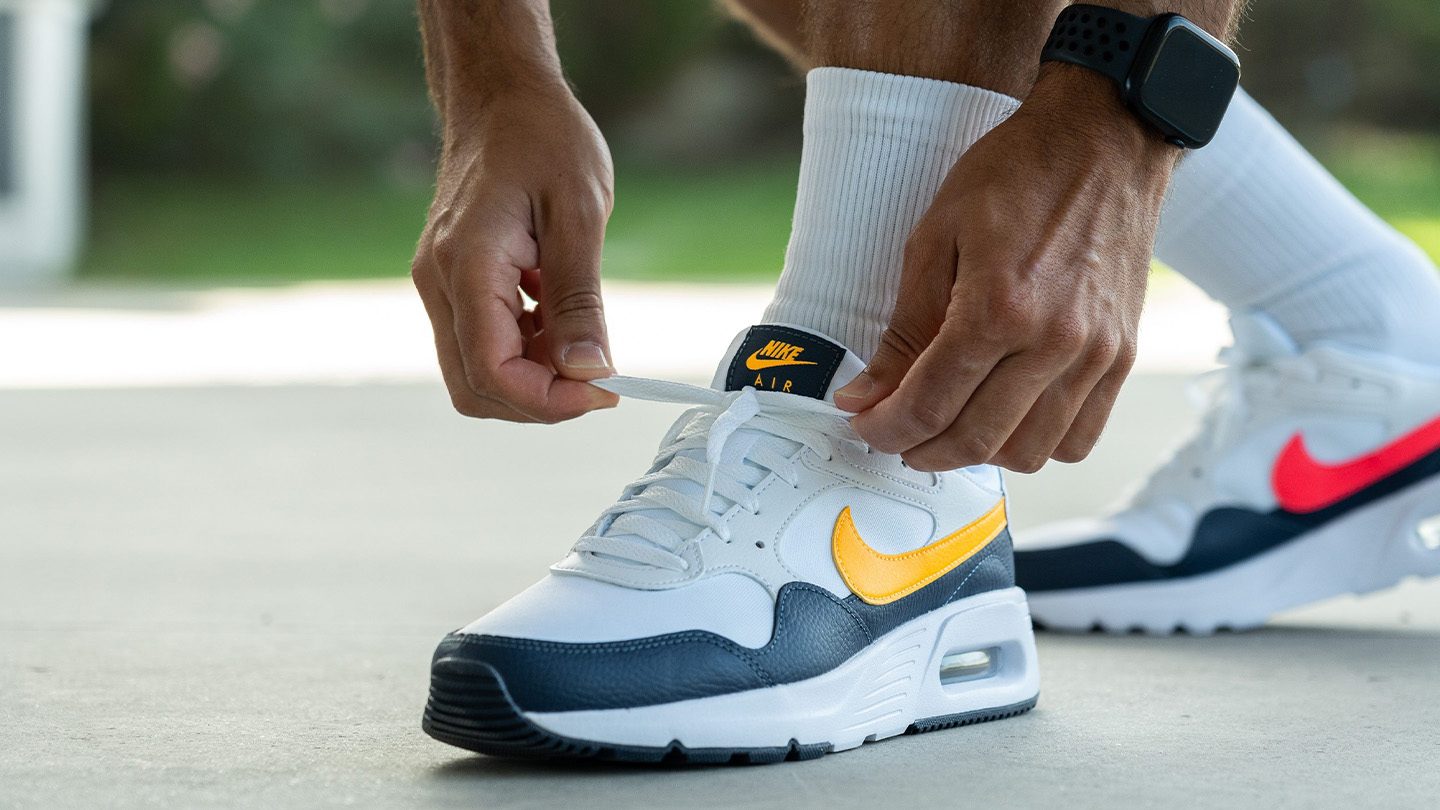
We buy shoes ourselves. We earn commissions when you buy through us, at no extra cost. Why trust us
Plantar fasciitis is a common injury, and it usually means you have to take it easy during the rehab. There are some sneaker features that can help along the way because they make sure that other leg muscles and tendons deal with the stress, so that the plantar fascia, which is already inflamed, does not have to work extra.
Based on our wear tests and lab tests, we realised which features feel super good when dealing with plantar fasciitis and, here, we talk about them all and back our claims with lab data. We also highlight the crème of the crop in different categories and elaborate why those trainers deserve to be at the very top.
How we test trainers for plantar fasciitis
On one side, there are enthusiasts who get trainers for free and are often nudged in a direction the brand dictates. What to (not) talk about or what to promote the trainers for.
On the other side, there's an independent shoe lab that we created and our testers who are interested in how the sneaker actually fits, feels, and performs, and not which brand it is. To keep this objective approach, we:
- buy the trainers with our own money
- test trainers in various conditions and make sure there are no brand ambassadors on our team
- lab test the trainers and describe each one with more than 20 data points
- publish everything we find out so that it's available to everyone.
Best trainers for plantar fasciitis overall
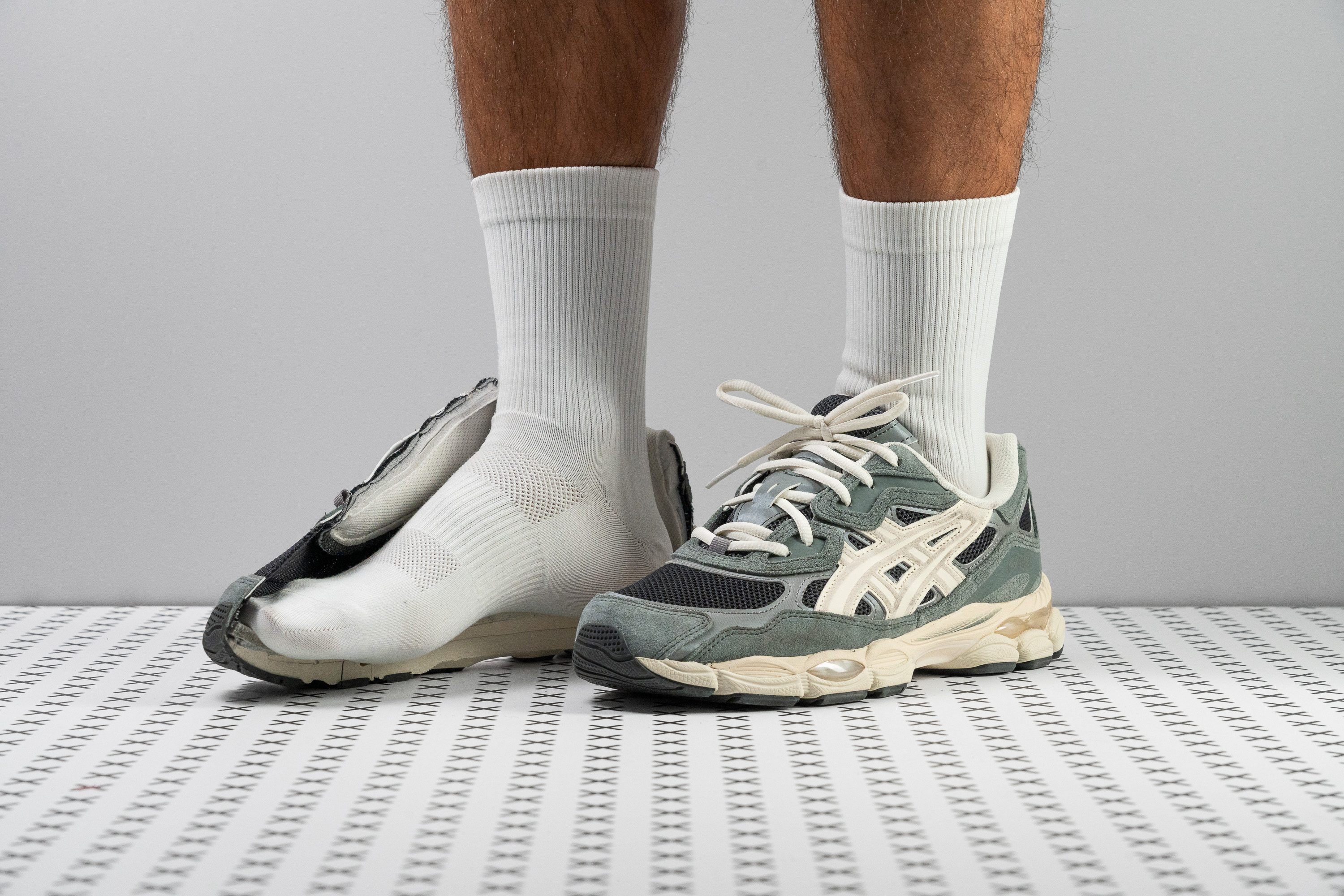



























































What makes it the best?
The ASICS Gel NYC offers brilliant impact protection that keeps our heels and arches happy. We felt surefooted throughout our walks because of its wide and firm base, which we proved in the lab. With its secure foothold and surprising lightness, we awarded it as our top plantar fasciitis sneaker.
We had a good slab of foam between our feet and the ground, validated by our calliper with an above-average 34.8/24.8 mm stack. The cushion feels firm, evidenced by its high 37.0 HA durometer reading, which naturally boosts stability. To relieve our heels from strain, the rear includes a GEL insert for gentler landings.
The broad base also offers undeniable support, giving us extra room to find our footing securely. Our calliper confirms it is indeed massive at 114.6/91.6 mm vs. the 108.5/83.6 mm average. The heel counter held us in place with confidence and comfort, evidenced by its 4/5 stiffness rating in our manual assessment.
We enjoyed how Gel NYC was not a burden on foot. In fact, our scales show that at 13.2 oz (373g), it’s even 4.6% lighter than average. However, it’s built delicately and is prone to premature wear. Be careful not to overuse this pair so that it can last longer.
Pros
- Incredibly breathable
- Very comfortable
- Supportive and stable
- Features GEL techonology
- Fits true to size
- Feels light on foot
- Great mix of style and function
- Super trendy retro runner vibes
- Excellent grip even on wet
Cons
- Not durable
- Not for running
Best summer trainers for plantar fasciitis
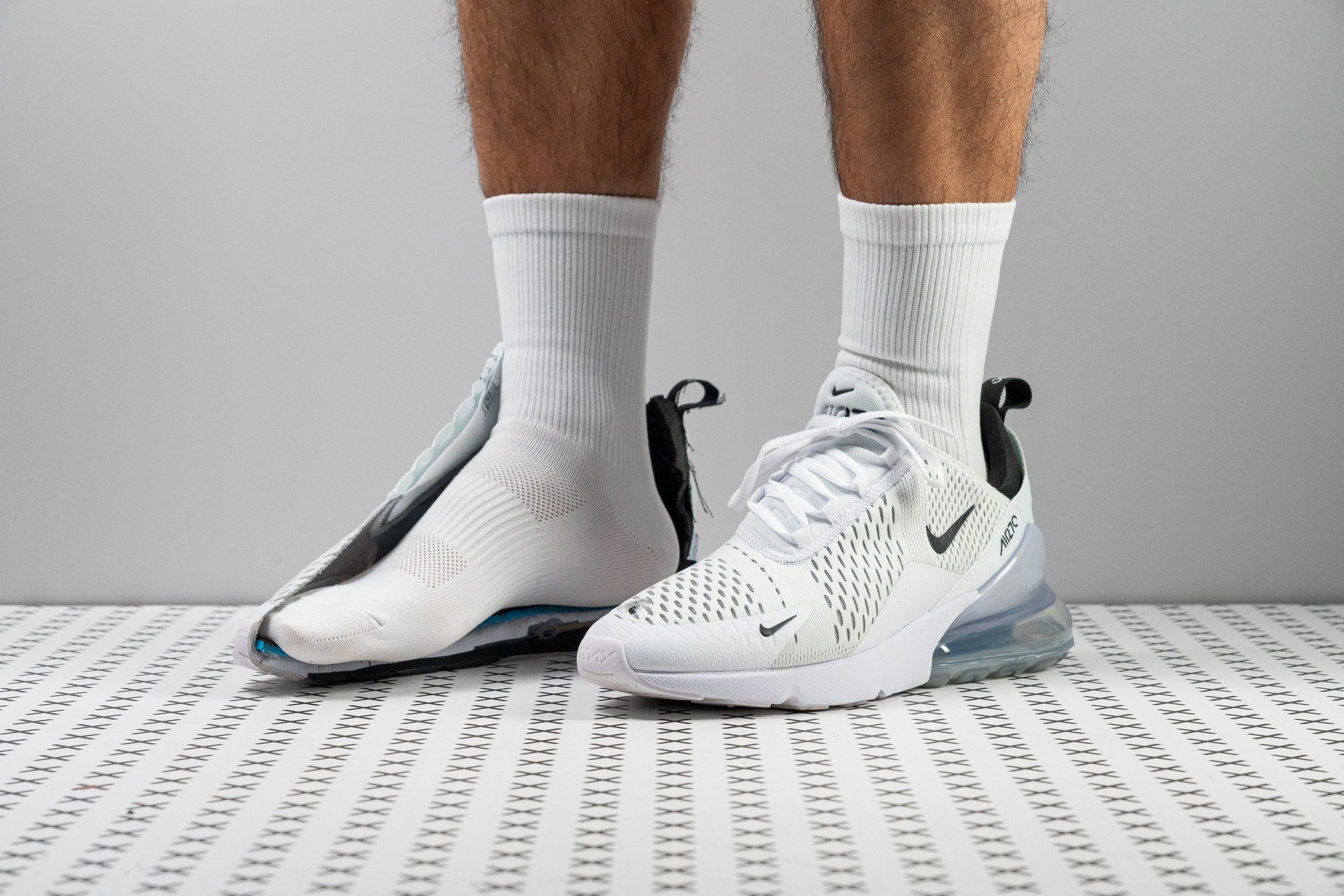










































What makes it the best?
The Nike Air Max 270 is all about comfort with a touch of support in the right areas. In our walks, we enjoyed its massive Air technology in the heel that softened the ride, its sturdy support, and its full-on ventilation, which made our jaws drop in the lab. Easily, it’s our best summer plantar fasciitis sneaker.
This pair instantly allowed us to enjoy the cool breeze in our walks, which is why we weren’t surprised to see how smoke flowed out of the shoe with no hindrances in our lab test. We couldn’t give it anything below the maximum 5/5 rating!
AM 270 delivers otherworldly comfort, and our feet can’t deny it! We measured its stack height at a massive 36.4/20.3 mm, which leads to a steep 16.1 mm drop that takes the pressure off our heels. The midsole features two firm foam densities but feels much softer underfoot because of the Air technology.
Besides its firm cushion, the platform feels stable because of its high torsional rigidity. It took much effort to twist the shoe with our hands, so we gave it a 4/5 rating. Thankfully, the case is different when it comes to bending our feet. Being 31.2% more flexible than average, we could move freely and comfortably.
Unfortunately, its comfort is limited to those with medium and narrow feet. Its forefoot is quite narrow and may feel restrictive to those with wide feet.
Pros
- All-day comfort
- Fun and springy ride
- Incredibly lightweight
- Flexible structure
- Practical booty-like construction
- Perfect for active people
- Cool Nike Air technology
- Trendy futuristic vibe
- Crazy number of colorways
Cons
- Upper lacks durability
- Not for people with wide feet
- Can be slippery on wet
Trainers for plantar fasciitis with the best stability
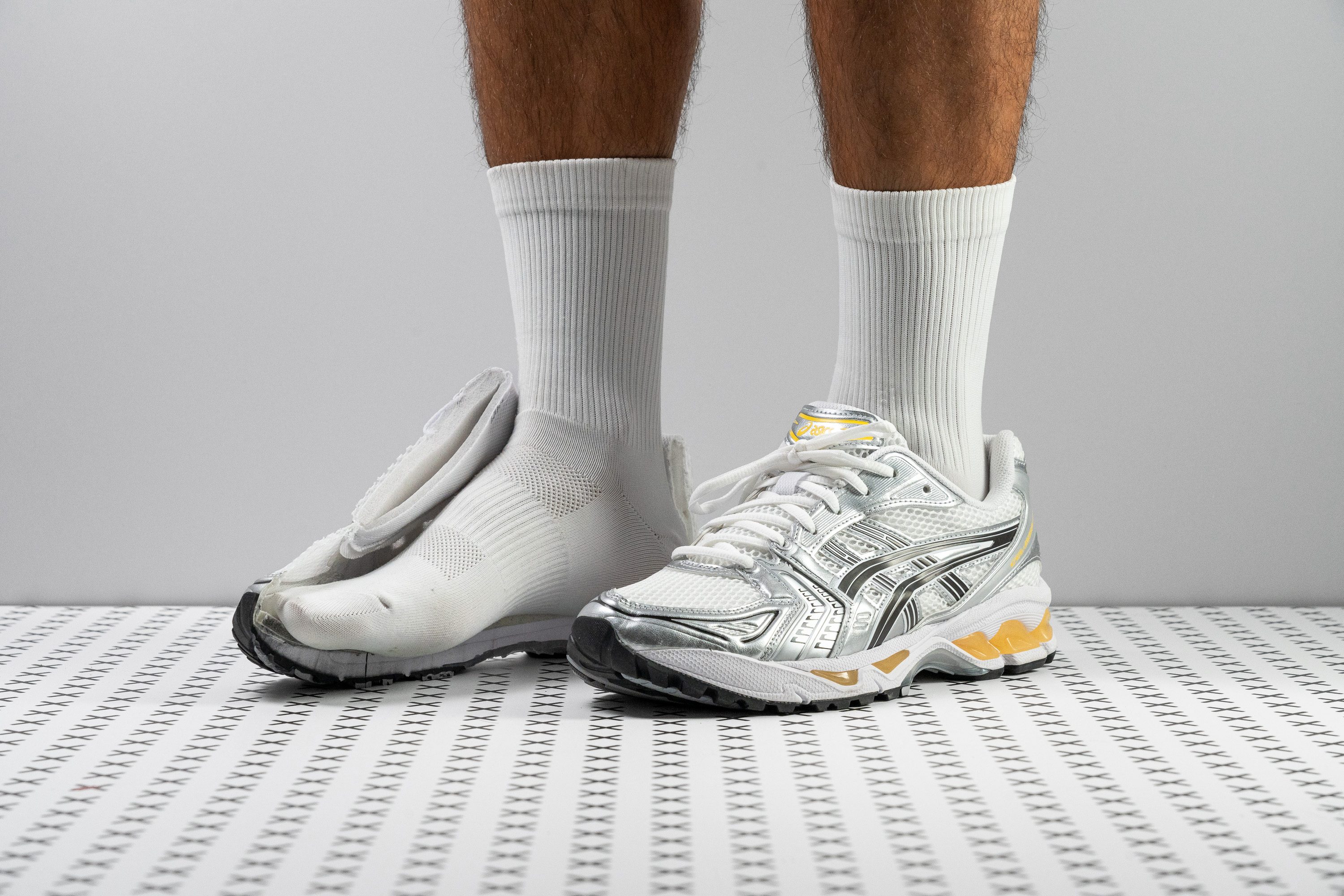

























































What makes it the best?
The ASICS Gel Kayano 14 is a supportive shoe that stands out with the lightness and plush comfort it offers. In the lab, we discovered its rigid structure and firm cushion are complemented by an airy build and a softer Gel insert in the heel. Ultimately, it’s our best stability sneaker for those dealing with plantar fasciitis.
The Kayano 14’s cushion did not add any pain to our feet. It has a well-cushioned 32.7/22.6 mm stack that protects us from impact, which measures a balanced 30.0 HA for stability. Meanwhile, cushioning is enhanced with the plush Gel technology in the heel, which is the first area that lands when walking.
We never doubted our steps because the broad 113.3/88.2 mm base allowed us to centre our feet. Its structure also highly resists excessive lateral movements, proven by its high 4/5 torsional rigidity rating, keeping us safe from potential injuries.
Unlike other supportive shoes, Kayano 14 managed to be light and loose. It weighs only 12.4 oz (352g), 10.0% below average, and emerged almost as flexible as the average, leading to smooth and easy movement.
Sadly, its performance in our Dremel tests was disappointing. Those looking for a long-lasting shoe should go for a more durable kick.
Pros
- Very stable overall
- Comfortable for all-day use
- Incredibly breathable
- Pretty lightweight
- Great lockdown feel
- Features Gel technology cushioning
- Retro-futuristic style
- Trendy Y2K vibes
- Great grip on wet and dry surfaces
Cons
- Not the most durable
- Not affordable
Best dad shoes for plantar fasciitis




















































What makes it the best?
Offering both comfort and sturdy support in a chunky and retro-looking package, the New Balance 990 v6 is our best dad shoe among plantar fasciitis trainers. Proven in the lab and out on the streets, it gave us a steady platform with plush heel cushioning, in a lightweight package for all-day wear.
The presence of the FuelCell midsole was a pleasant surprise, offering bottomless cushioning with its 39.1/23.8 mm stack. Moreover, the rear dampens impact effectively with its high 102 SA rating, meaning it reduces the stress of landings 14.6% better than average.
Designed with arch support in mind, the 990 v6 features the ENCAP rim that wraps around the heel. It makes the midsole more rigid so that we don’t move laterally excessively, which may cause additional strain on our feet. In our manual test, we gave both its heel counter and torsional rigidity high 4/5 and 5/5 scores, respectively.
Thankfully, 990 v6 only weighs 12.9 oz (366g), creating a smoother and more natural ride. Despite its chunky midsole, it’s 6.2% lighter than average.
Sadly, the upper surrendered easily to our Dremel. Sneakerheads searching for long-lasting daily beaters should find another pair.
Pros
- Unexpectedly lighter than average
- Real suede and quality materials
- Extra thick cushioning for all-day wear
- Mind-blowing arch support and stability
- Exceptionally hard-wearing outsole
- Fantastic breathability
- Well-padded all around
- Six(!) widths available
- Six(!) widths available
Cons
- Very delicate toebox mesh
- A bit stiff
Best lightweight trainers for plantar fasciitis
























































What makes it the best?
The Nike Initiator is as comfortable as a running shoe, easy on the feet, with a good amount of support. Lab tests reveal its firm and stiff midsole, complemented by its flexible forefoot and airy build. Our feet couldn’t deny it’s the best lightweight plantar fasciitis sneaker we’ve tested!
We appreciated the Initiator’s comfort from the first time we wore it, with its light 11.6 oz (329g) build. That’s 15.9% below the average sneaker in the lab! Its flexible midsole boosts its weightless sensation since it’s easy to manoeuvre. In our bend test, it emerged 6.9% more adaptive than average.
The midsole took care of our heels, with an additional 2.7 mm foam in the rear vs. average. Its 12.7 mm high drop reduced pressure off our feet as well. The platform is nicely firm and stable, confirmed by our durometer with a high 31.4 HA measurement.
The Initiator includes a top lateral wall that stiffens the ride. In our torsional rigidity test, it fought hard against twisting, so we gave it a solid 4/5 score. On foot, this translates to a more centred ride.
Note that it runs a bit smaller than the standard. We recommend sizing up for a better fit.
Pros
- Great impact protection for all-day wear
- Fairly stable and supportive
- Lightweight structure
- Pretty durable overall
- Super breathable
- Cool 2000s retro-futuristic vibe
- Great traction (waffle sole)
- Fairly stable and supportive
- Affordable
Cons
- Not for running
- Runs small for some
Trainers for plantar fasciitis with the best shock absorption
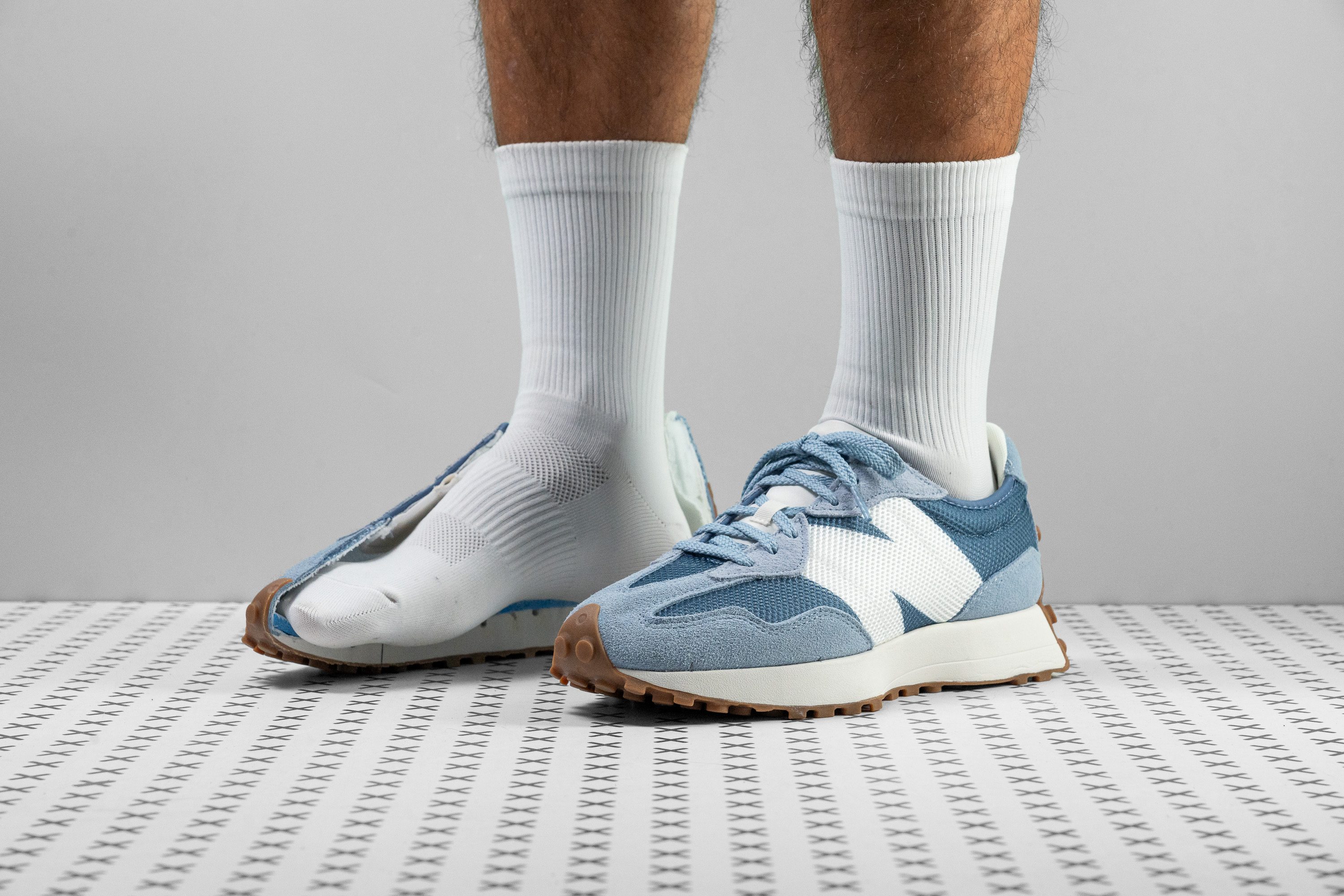















































What makes it the best?
The New Balance 327 allowed us to confidently strut the streets, not only with its classic look but also with its surefooted sensation. Lab tests reveal it has a firm yet protective cushion and a broad and stiff midsole. Among plantar fasciitis trainers, the 327 stands out with the best shock absorption.
The shoe feels both cushioned and stable, validated by its above-average 35.0/25.0 mm stack height and its balanced 26.6 HA durometer reading. It felt comfortable for long hours of errands and was stable enough when we carried our groceries. Each landing feels well-protected, and our shock absorption test backs this up with a high 111 SA rating in the heel, offering 27.6% better impact protection than average.
Its anchored sensation stems from its stiff and wide platform. It heavily resisted twisting, so we gave it a remarkable 4/5 torsional rigidity score. We had no instances of losing our stance because the base is a massive 119.5/90.6 mm.
However, the shoe has a streamlined silhouette towards the front, so we can’t recommend this pair to those with wide feet or bunions.
Pros
- Fashionably sporty
- Excellent impact protection
- Stable and planted platform
- Lightweight and comfortable
- Above average breathability
- Excellent grip
- Suitable for driving
- Budget-friendly
Cons
- Not suitable for wide feet
- Not as supportive as other NB trainers
- Not suitable for wide feet
Best budget sneaker for plantar fasciitis
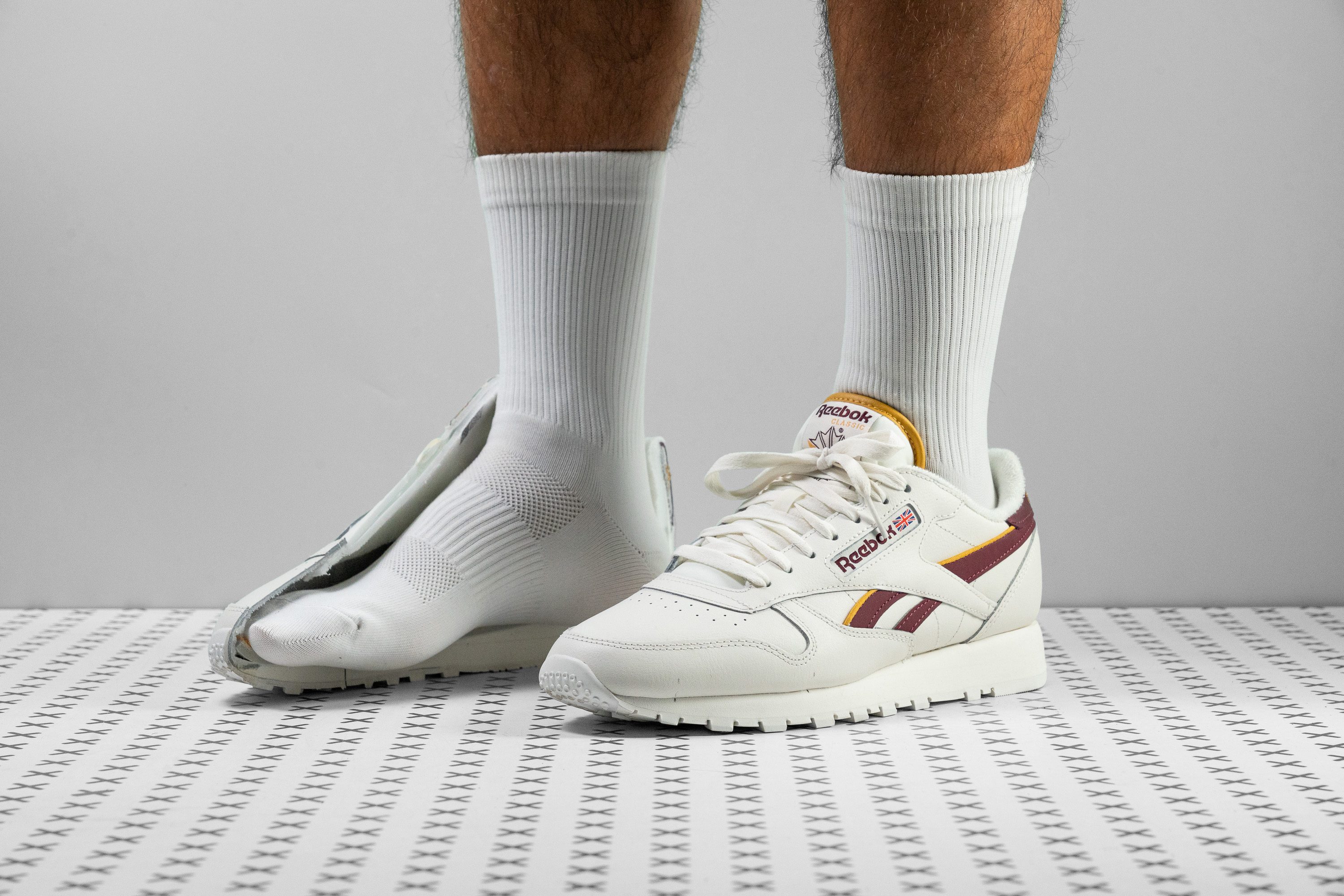







































What makes it the best?
The Reebok Classic Leather is a highly supportive and well-cushioned pair that’s wrapped in a light and affordable package. Our feet enjoyed their easy yet surefooted sensation. At £80, it’s 34.8% cheaper than the average kick in our lab, making it our best budget plantar fasciitis sneaker.
The cushion effectively protected our feet from additional pressure and strain. Our calliper shows its stack is an above-average 35.7/22.1 mm, featuring a 13.6 mm drop that enhances a forward-rolling ride. We didn’t experience any unwanted arch collapse because the foam is a firm 35.1 HA.
Even when our feet got tired, we experienced limited lateral movements with its stiff structure. In our assessment, the midsole was hard to twist, and the heel counter had very little give, so we awarded both with high 4/5 stiffness scores.
Classic Leather is not only light in the pocket, but on the feet too. Our scales show it weighs 11.4 oz (323g), 17.4% below average. We like how it’s one less thing to carry and worry about!
However, this sneaker has a streamlined build that may feel less stable for those with wide feet. If this is the case, we recommend finding a more accommodating pair.
Pros
- Mighty plush
- Great investment
- Leader of the pack
- Supportive
- Aesthetically well-rounded
- Enduring
- Affordable
Cons
- Downgraded upper
- Dirt-magnet
Plantar fasciitis symptoms and causes
Plantar fasciitis is a condition in which the plantar fascia gets overused and inflamed. This can happen for many reasons: simple overuse, bad footwear or footwear that should have been replaced sooner, plantar fascia compensating for other muscles and tendons (like calves or Achilles tendons), and, therefore, overworking, and so on.
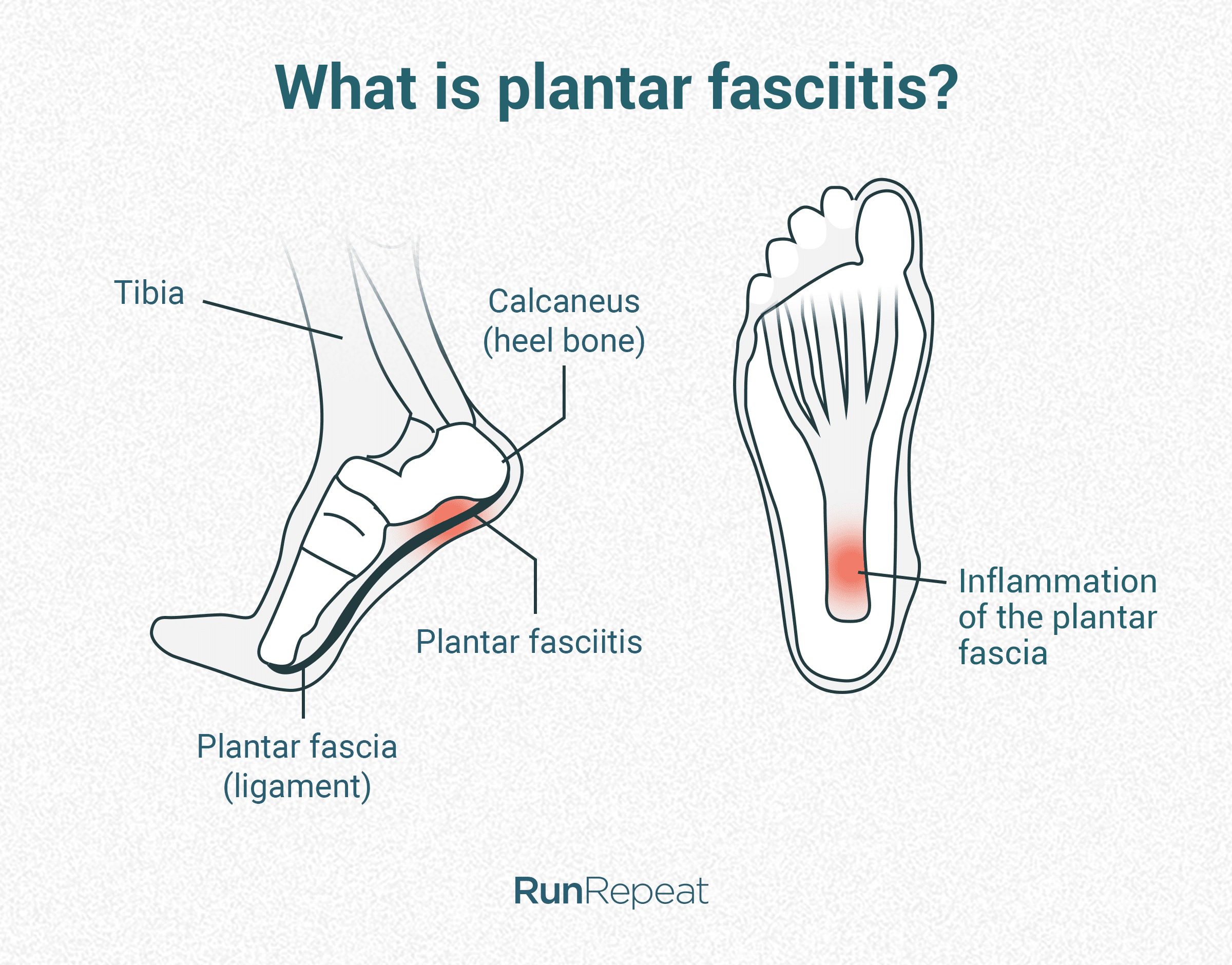
The plantar fascia stretches between the ball of the foot and the heel bone. When it gets overused, it starts hurting at the bottom of the foot around the heel and the arch. This is especially felt when you wake up and with the first few steps you take.
If you’re experiencing what looks like plantar fasciitis, we recommend seeing a specialist first to get a proper diagnosis and rehabilitation plan. This guide is not here to offer a medical diagnosis but to talk about features in trainers that may help while you’re dealing with plantar fasciitis. Other conditions and injuries may cause heel pain, so we strongly recommend confirming or denying plantar fasciitis.
How can trainers for plantar fasciitis actually help you
Trainers can’t heal plantar fasciitis. It can help along the way and, given that plantar fasciitis is often an overuse injury, it’s important to take it easy and follow a rehab plan.
Given the location of the plantar fascia, trainers for plantar fasciitis help get rid of any work it does not have to do. By this, we mean sending the stress to the other parts of the legs, decreasing the stress itself. This is accomplished with a:
- high heel drop, which utilises higher leg muscles and not foot muscles
- cushioned platform which helps increases the shock absorption the sneaker is able to do thanks to all the cushioning
- stiff heel counter, which locks the heel in place which means that it moves less so the plantar fascia is working less
- torsionally rigid platform which prevents excessive twisting of the foot which would put a lot of extra pressure on the plantar fascia.

All the trainers for plantar fasciitis that we test go through extensive testing and, for some of it, we have to cut the trainers into pieces. This allows us to examine and measure various bits and pieces.
5 features to look for in trainers for plantar fasciitis
Based on our wear tests and lab tests, we realised that these 5 features are needed if you’re struggling with plantar fasciitis:
- Trainers should have a shock absorption of at least 100 SA to be protective enough
- High heel drop, 8mm at least
- Midsoles that are not plush (too soft). We recommend those that scored at least 20 using a shore A durometer
- Torsionally rigid platforms
- Stiff heel counters.
We will dive deep into each of these features below to explain why we find them so important for plantar fasciitis.
1. Shock absorption is very important when you’re experiencing plantar fasciitis
Shock absorption tells us how protective the midsole is in terms of dealing with the impact forces. When shock absorption is good (high), the midsole attenuates the impact, which means that less stress is sent to the legs. Given the nature of plantar fasciitis, this feature is very important because our feet already have an injury to deal with.
When testing the shock absorption, we use a specialised machine and honour the ASTM F1976 13 protocol. This means that we drop an 8.5kg mass from a 5 cm height onto the heel, exactly at 12% of the inner shoe length. This standardisation of the test means that each sneaker is treated the same.
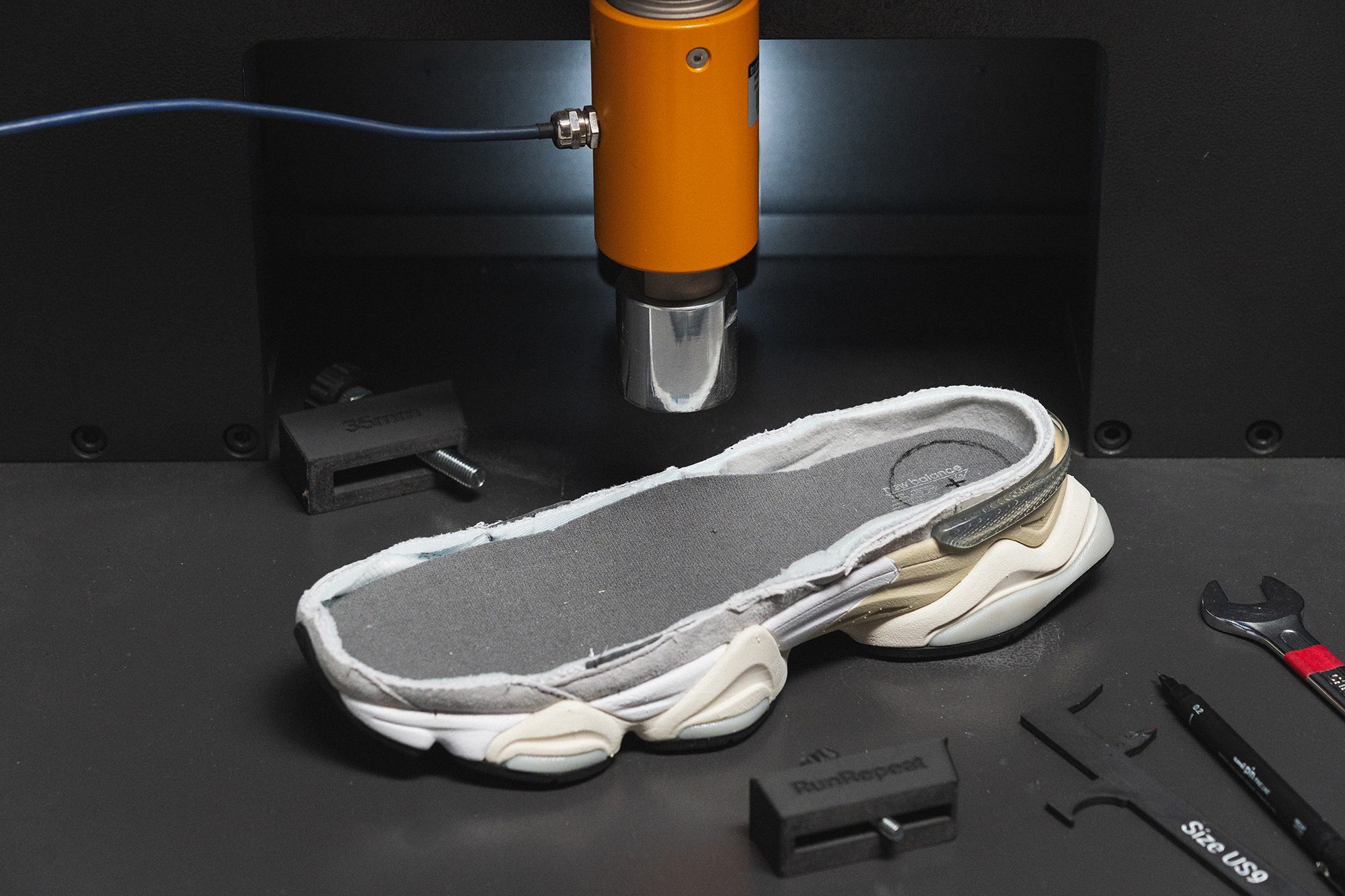
2. High heel drop is a must for plantar fasciitis
Heel-to-toe drop, or heel drop, is the difference in height between the heel and the forefoot in footwear. It goes from 0 mm, which we call zero drop, to very high or, better to say, very steep! The highest heel drop we’ve measured so far in our lab is 22.6 mm.
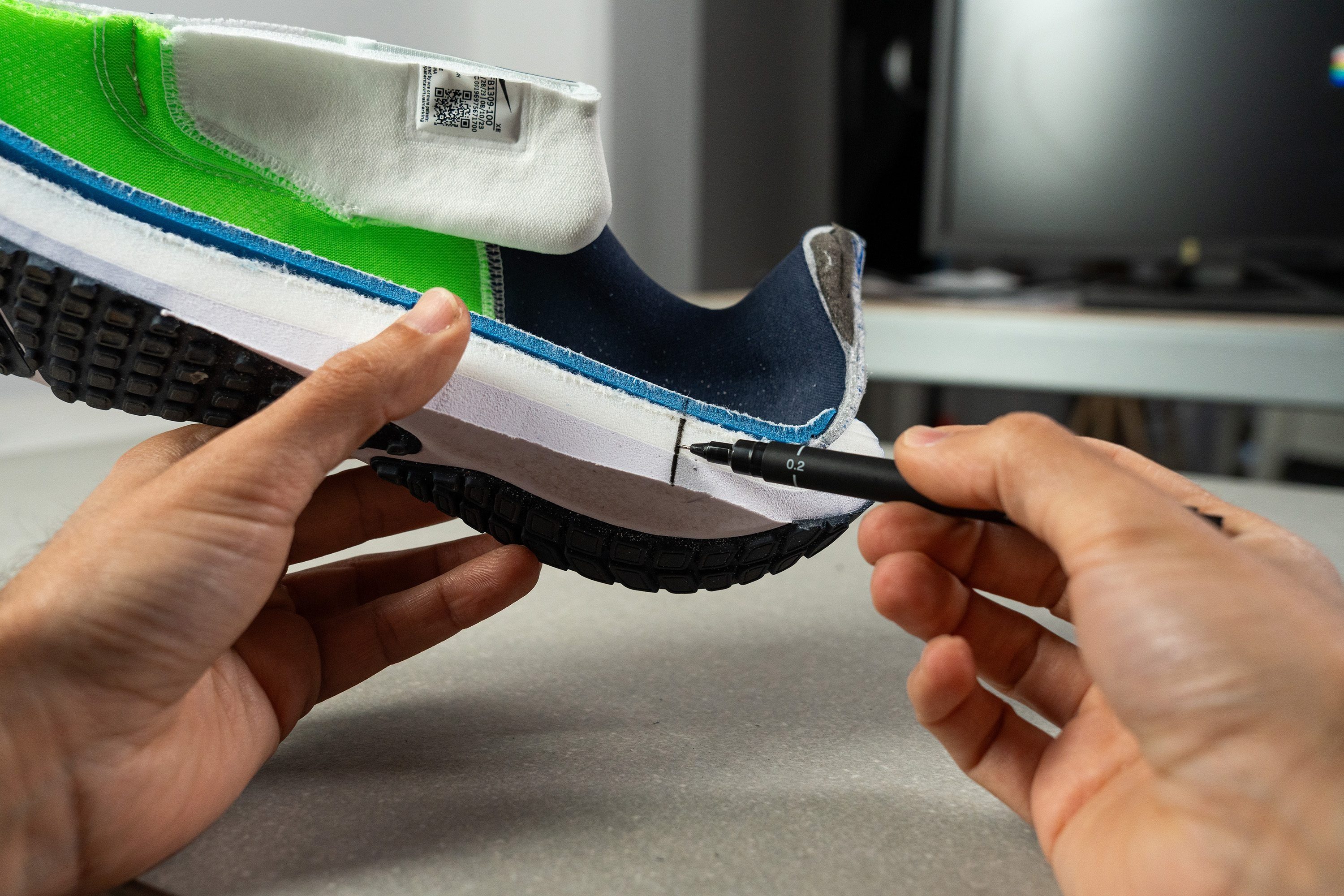
Based on plenty of research done for running shoes, there are 4 groups of heel drops: zero, low, mid, and high. For plantar fasciitis, we recommend a drop of 8 mm or higher (high heel drop). We do so because it’s important to relieve the plantar fascia of any pressure that is not necessary and, by choosing a higher drop, we’re choosing to utilise higher-leg muscles more than the lower ones.
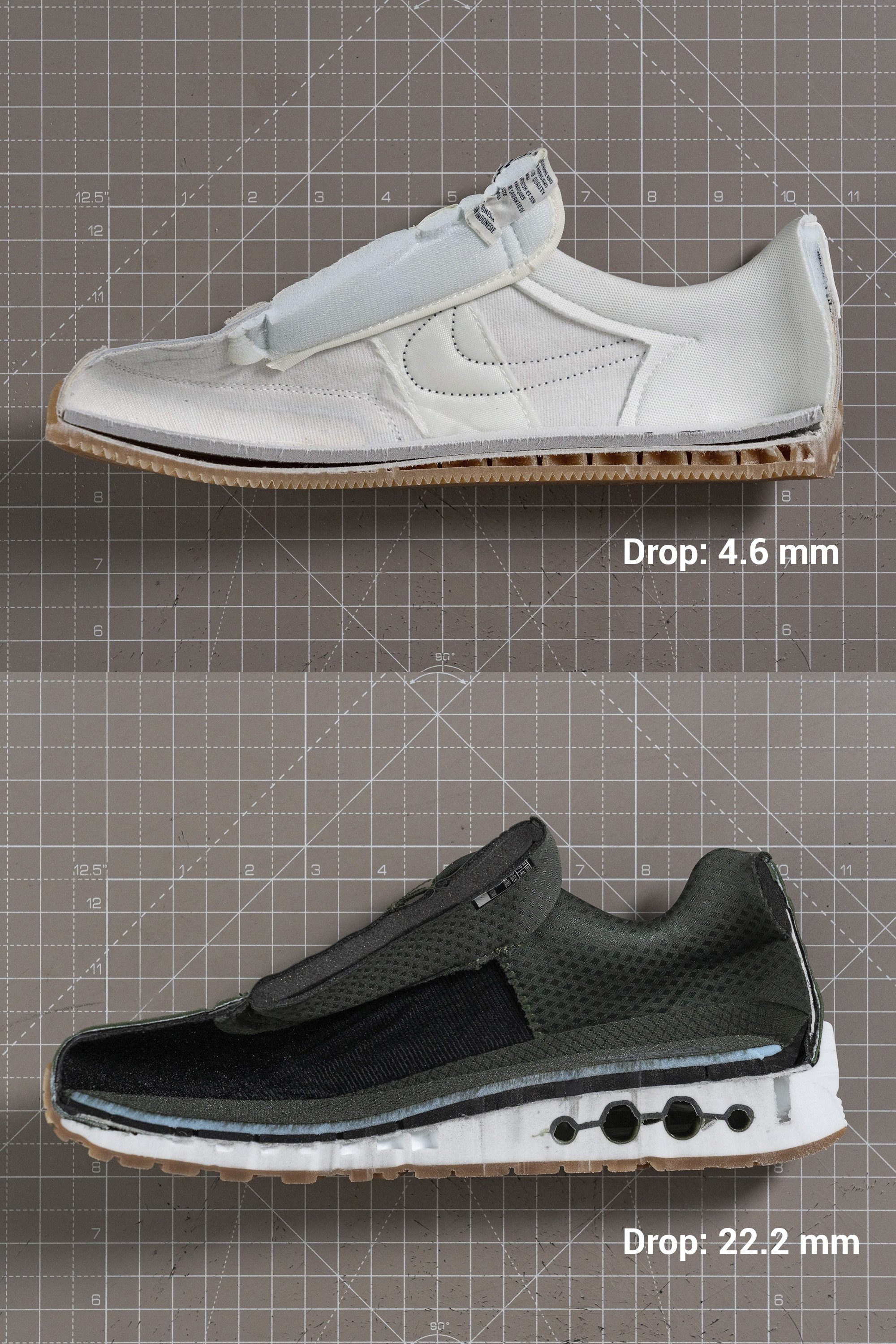
If you like steep trainers, here’s a selection of those with the highest heel to toe drop:
3. Very soft midsoles are out of the picture
The softness of the midsole is measured with a shore A durometer on a sneaker that’s cut in half, as that’s the only proper way to do it. Once the needle is stuck into the midsole, we get a reading on a digital display and the higher it is, the firmer the midsole.
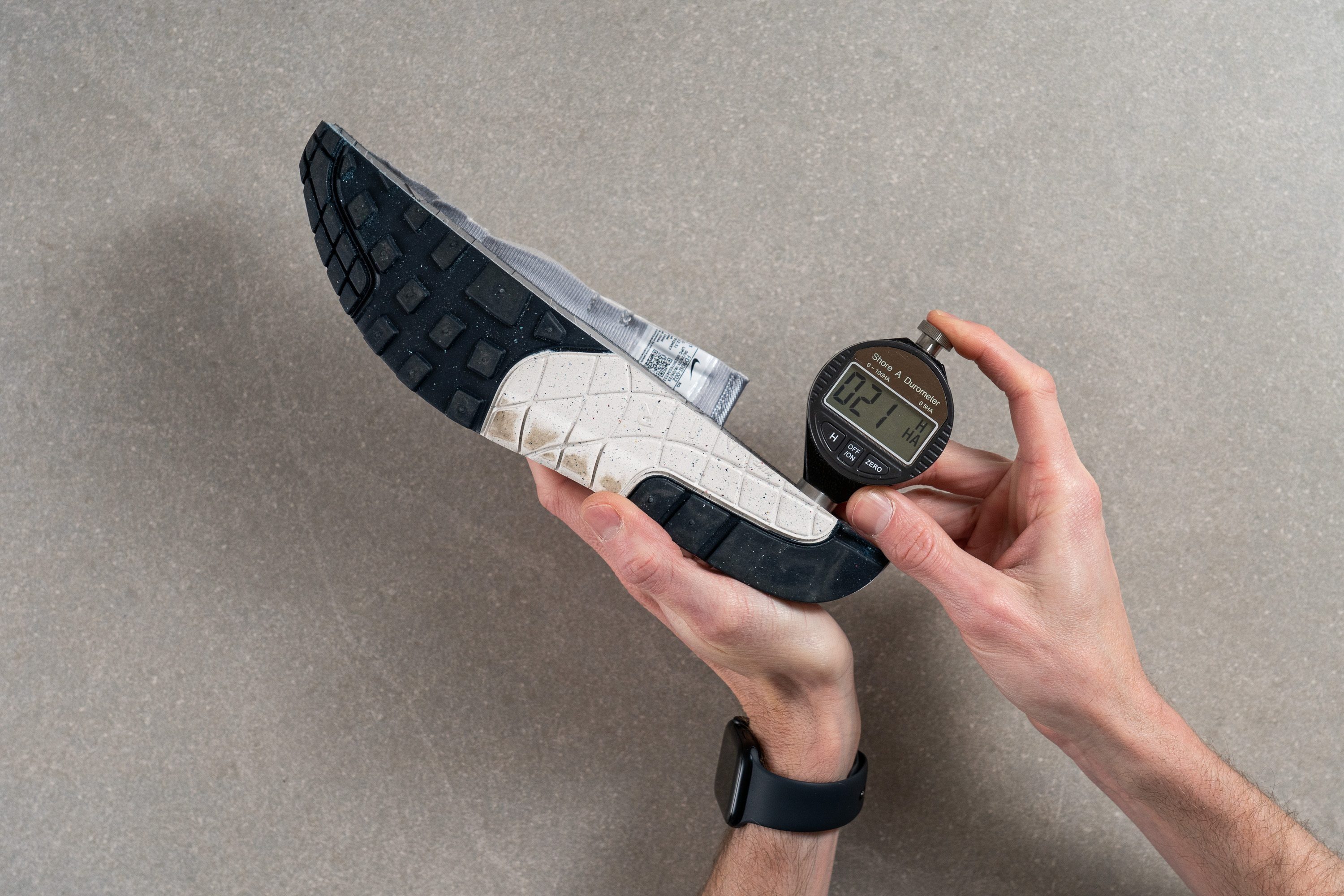
For those experiencing plantar fasciitis, we recommend a midsole softness of at least 20. Fortunately, the majority of trainers are above that limit! At the moment of writing this guide, the measured softness range is 15-46.
We recommend this just to be on the safe side and avoid too soft midsoles. These midsoles would make the platform more unstable as the feet may be able to wobble. Any extra (micro) movement may put more stress on the plantar fascia and we wantt to avoid that.
4. Hard to get twist trainers are great for plantar fasciitis
If you hold a sneaker in your hands, you can do 2 things to test its flexibility: try to bend it, to test its longitudinal stiffness, and try to twist it, to test its torsional rigidity. When talking about plantar fasciitis, we care about the latter.
We recommend finding trainers that scored 3/5, 4/5, or 5/5 on our torsional rigidity assessment. This means that if you try to twist them with your own hands, they will resist it. This torsional rigidity is important because it does not allow the foot to twist. This twisting would make the foot muscles work more, and, with the plantar fascia already inflamed, it could bring more stress to it.
Unlike this twisting movement, longitudinal flexibility is about being able to bend the foot with the sneaker. This is possible in flexible trainers and not possible in longitudinally stiff trainers. The great thing is, you can choose which one you want.
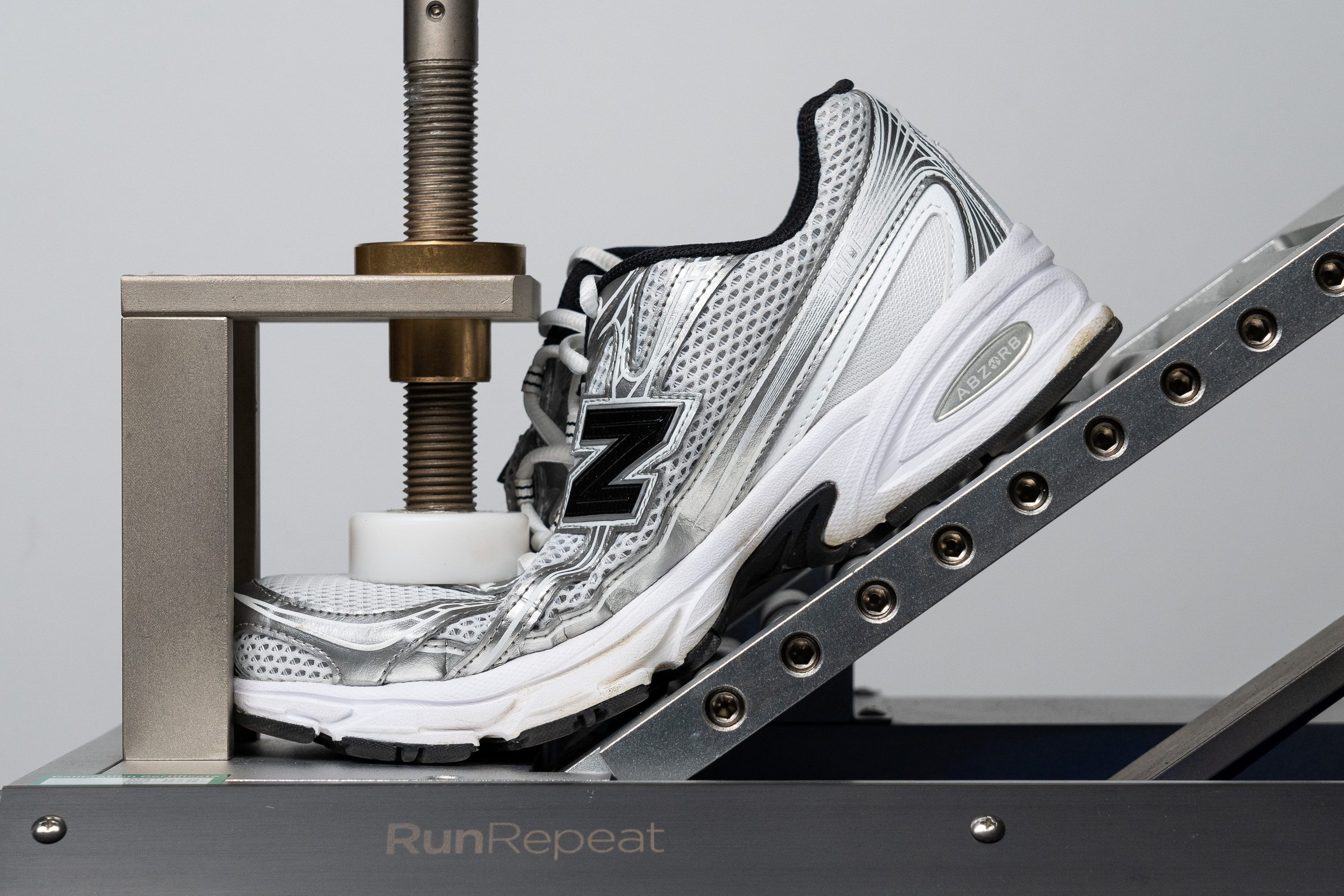
If you’re looking for trainers that bend more naturally with your feet, look for lower numbers under Flexibility/Stiffness.
This torsional rigidity that we recommend is another reason why minimalist trainers are out of the picture for those struggling with plantar fasciitis. The super flexible (in all directions) platform offers no support, there’s not enough midsole to cushion the impact, and the heel drop is not high enough to save the plantar fascia from additional stress.
5. You will love stiff heel counters in trainers for plantar fasciitis
Together with a torsionally rigid platform, stiff heel counters feel super supportive! In our experience, they are important because they lock the heel in place and add an extra layer of stability. This is almost immediately felt.
In our lab, we assess the stiffness of the heel counter by squeezing it and pushing it. We assign it a 1-5 rating, where 1/1 is the very flexible and 5/5 very stiff. For plantar fasciitis, we recommend heel counters that scored at least 3/5.
Although this stiffness may sound harsh, we have some good news: these stiff heel counters are padded. Often, very padded! Look at the examples below.
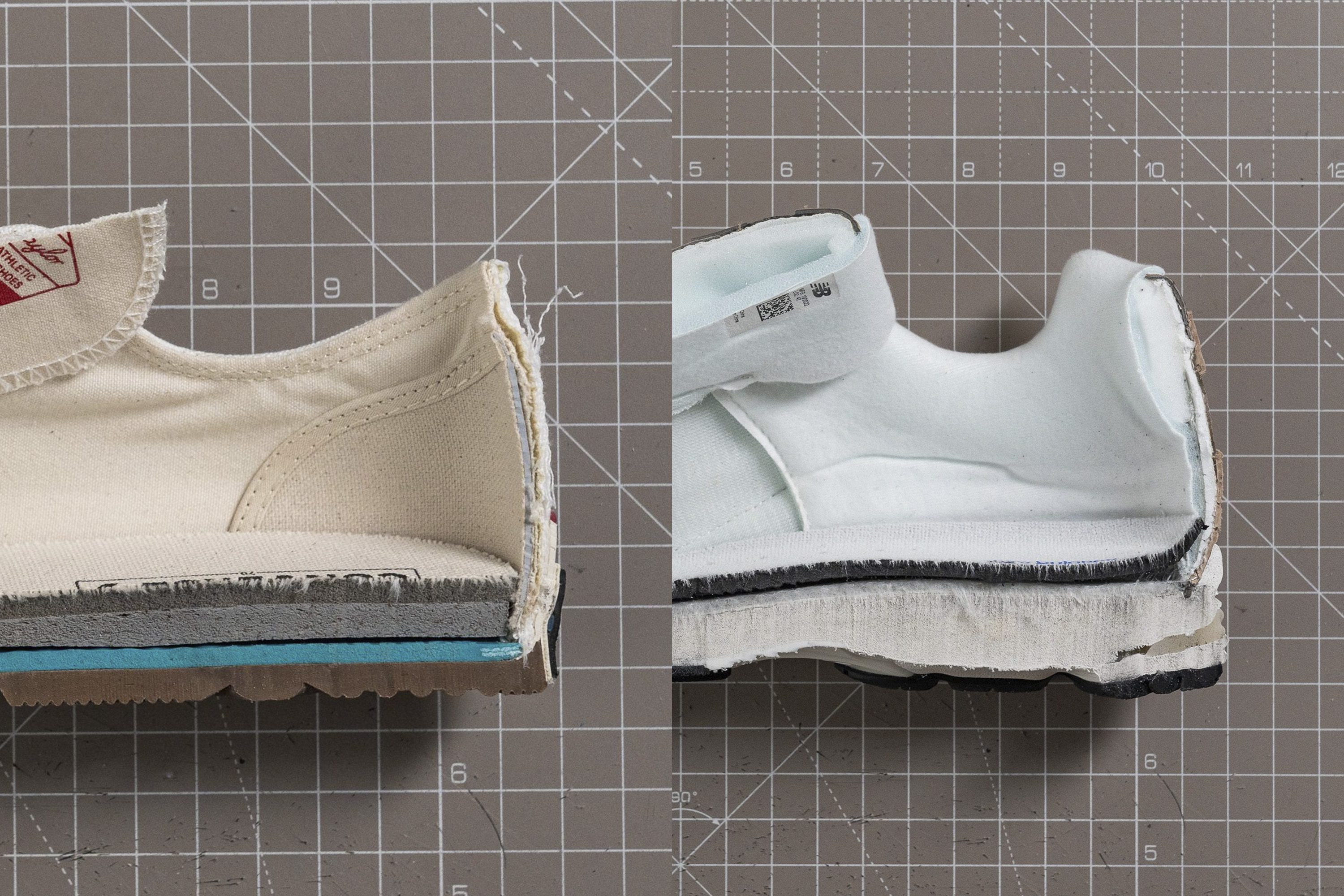
This stiffness comes from internal and/or external heel counters.
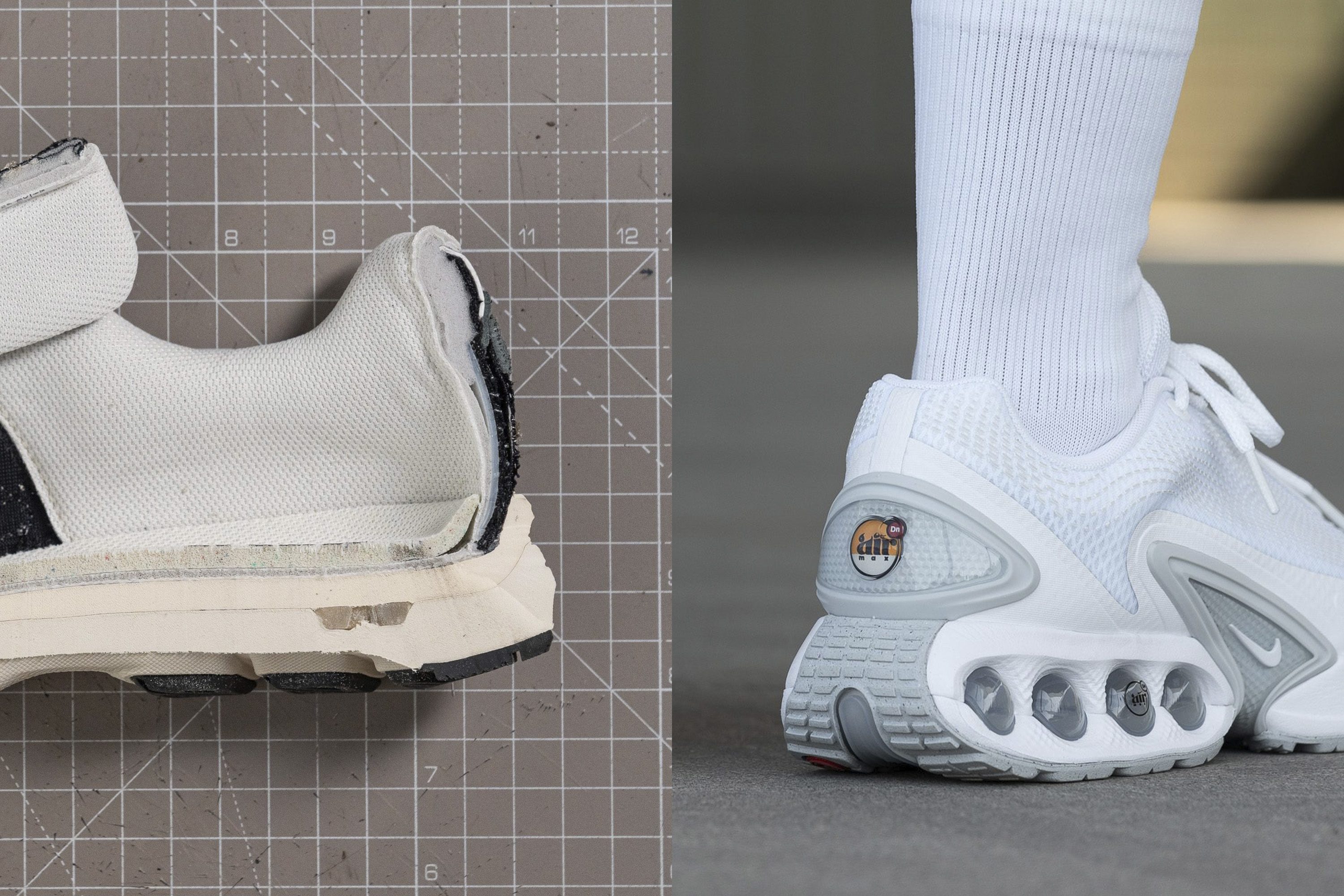
The external ones are easy to notice, and the internal ones are visible when we cut the trainers in half.
Finding budget trainers for plantar fasciitis
Even if the sneaker you're considering is expensive at the moment, you may wait for it to get discounted. At any moment, you can look at the price history on our website or set a price alert so that you're notified once the price drops. You can also visit the deals page to look for the biggest discounts!
In the table above, MSRP stands for manufacturer's suggested retail price. This means that we're looking at the prices when the trainers were released. The good thing is, discounts happen all the time and you can look for them.

